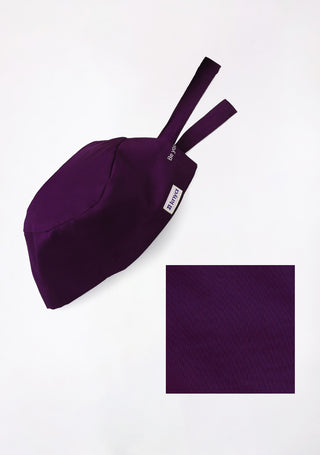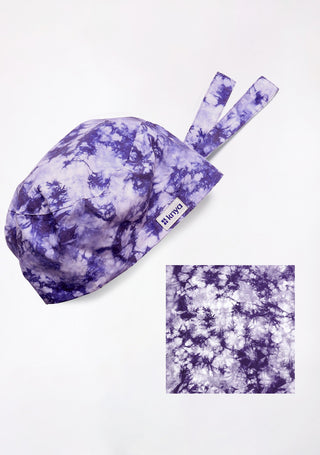Maintaining your scrubs properly is essential for hygiene, professionalism, and durability. By implementing daily maintenance habits, washing scrubs correctly, and storing them properly, you can extend their lifespan while ensuring they remain clean and presentable. With these best practices, your scrubs will continue to serve you well through long shifts and demanding work environments.
Understanding the Importance of Proper Scrub Maintenance
Scrubs are subjected to long shifts, constant movement, and potential exposure to bodily fluids, bacteria, and stains. Regular cleaning and proper care are essential to prevent the spread of infections and keep scrubs looking fresh and professional. Without a structured maintenance routine, scrubs can wear out quickly, losing their integrity, comfort, and effectiveness.
What is Scrub Maintenance?
Scrub maintenance refers to the set of practices used to clean, inspect, and store medical scrubs to ensure they remain in excellent condition. This includes washing techniques, stain removal methods, and proper storage practices to prevent wear and tear.
Why is Scrub Maintenance Important?
- Hygiene and Safety – Medical professionals work in environments where exposure to germs and bacteria is common. Regular washing eliminates contaminants and prevents infections.
- Professional Appearance – Well-maintained scrubs help project a polished and professional image, which is essential for patient confidence.
- Durability and Cost Efficiency – Scrubs can be expensive, and frequent replacements can be costly. Proper maintenance extends their lifespan, saving money in the long run.
- Comfort and Fit – Worn-out scrubs can lose their shape, elasticity, and breathability, making them uncomfortable to wear during long shifts.
For our male healthcare professionals, we offer a wide range of comfortable and stylish scrubs for men, designed to enhance both comfort and professional image
Daily Scrub Maintenance: Quick Routines for Lasting Wear
Changing Scrubs Regularly
Wearing the same scrubs multiple times without washing can lead to bacteria buildup and odors. Make it a habit to change into a fresh pair daily, or even more frequently if necessary, especially after exposure to spills or bodily fluids.
Inspecting Scrubs for Damage
Before and after each shift, inspect your scrubs for rips, loose seams, or fraying fabric. Minor tears can worsen over time, so repairing small damages early can prolong the life of your scrubs.
Cleansing Spills and Stains Immediately
Accidental spills and stains are inevitable in a medical setting. The sooner you treat them, the better your chances of completely removing them. Keep a stain remover pen or wipes in your locker or bag to address stains as soon as they occur.
How to Wash Your Scrubs: Best Practices for Hygiene and Fabric Care
Sorting Your Scrubs
Separate scrubs from regular clothing and wash them as a dedicated load. This prevents cross-contamination and ensures that your scrubs receive the specialized care they need.
- Sort by color – Light-colored scrubs should be washed separately from dark ones to prevent color bleeding.
- Separate heavily soiled scrubs – If you’ve had a particularly messy shift, wash those scrubs separately to avoid spreading contaminants to other pairs.
Washing at the Ideal Temperature
Choosing the right water temperature is key to killing bacteria while preserving fabric quality.
- Hot water (above 140°F or 60°C) – Kills bacteria and viruses effectively but can cause color fading over time.
- Warm water (90–110°F or 32–43°C) – A safer choice for colored scrubs, maintaining fabric integrity while still effectively cleaning.
- Cold water (below 85°F or 30°C) – Best for preserving bright colors but may not fully eliminate bacteria without additional disinfectants.
Choosing the Right Detergent and Disinfectant
Regular detergent alone may not be sufficient to fully sanitize scrubs. Consider adding:
- Antibacterial detergent – Designed to eliminate germs while being gentle on fabric.
- Hydrogen peroxide or oxygen-based bleach – Safe for colored fabrics and effective at disinfecting.
- White vinegar (1/2 cup in rinse cycle) – Helps remove odors and bacteria naturally.
We believe you deserve the best. Shop our amazing selection of lab coats right here
Avoiding Fabric Softeners
While fabric softeners may make your scrubs feel smoother, they can reduce fabric breathability and absorbency. Instead, use white vinegar in the rinse cycle to maintain softness without compromising fabric integrity.
Drying Your Scrubs
Drying scrubs properly is just as important as washing them.
- High heat drying – Helps kill bacteria but can cause shrinkage and fabric breakdown over time.
- Tumble drying on low heat – A gentler option that reduces damage while still providing some sanitization.
- Air drying – Preserves fabric quality and prevents shrinkage, but scrubs should be completely dry before wearing to avoid bacterial growth.
Additional Scrub Maintenance Tips
Ironing for a Crisp, Professional Look
Ironing your scrubs not only helps maintain a polished appearance but also provides an extra layer of disinfection. Use a steam iron at a moderate setting to avoid fabric damage.
Storing Scrubs Properly
Proper storage prevents wrinkles and contamination.
- Keep scrubs in a clean, dry space – Avoid storing scrubs in damp or cluttered areas where they can pick up odors.
- Fold or hang immediately after drying – This prevents wrinkles and keeps scrubs ready for use.
Keeping a Spare Set
Always have an extra pair of scrubs on hand in case of unexpected spills or emergencies. Many professionals keep a backup set in their workplace locker.
Avoiding Wearing Scrubs Outside the Workplace
Wearing scrubs outside of work can introduce contaminants to public areas or bring external germs into medical settings. Change into clean scrubs at work and avoid wearing them home.
When to Replace Your Scrubs
Even with the best care, scrubs won’t last forever. Consider replacing them when:
- The fabric becomes thin or see-through.
- Persistent stains won’t come out.
- The scrubs feel uncomfortable or lose their fit.
- Seams, pockets, or elastic bands become loose or damaged beyond repair.












